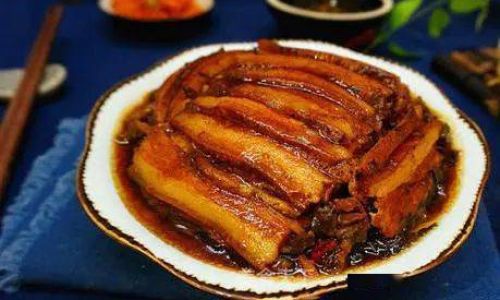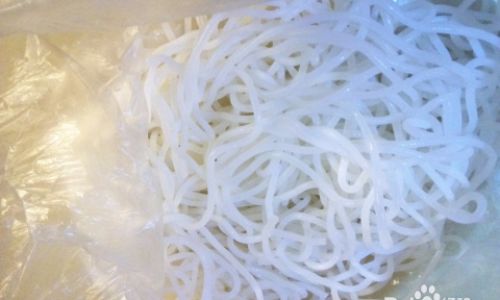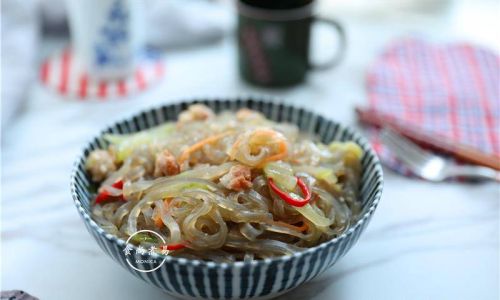Introduction
Salted Vegetable Pork, also known as Yan Cai Rou in Chinese cuisine, is a traditional dish that combines the savory flavors of salted vegetables with the richness of pork. This dish is particularly popular in regions like Sichuan and Hunan in China, where it is often served as a main course during festive occasions or family gatherings. The combination of tender pork and tangy, slightly sour salted vegetables creates a harmonious balance of flavors that is both comforting and satisfying.
Making Salted Vegetable Pork may seem like a daunting task, especially for those unfamiliar with Chinese cooking techniques and ingredients. However, with the right guidance and patience, you can create a delicious and authentic version of this dish at home. This comprehensive guide will walk you through each step of the process, from preparing the ingredients to cooking and serving the final dish.

Section 1: Understanding the Ingredients
Before diving into the recipe, it’s essential to understand the key ingredients and their roles in the dish.
1 Pork Belly
The star of the show, pork belly is chosen for its layers of fat and lean meat, which provide both flavor and moisture when cooked. Look for pork belly with a good fat-to-meat ratio, preferably with the skin still attached, as it adds texture and flavor when crisped up.
2 Salted Vegetables
Salted Vegetables, or Yan Cai in Chinese, are a crucial component of this dish. They are typically made from vegetables like mustard greens, Chinese cabbage, or radishes, which are salted, pressed, and fermented. This process preserves the vegetables and gives them a unique tangy, slightly sour flavor. You can find salted vegetables at Asian markets or online.
3 Aromatics and Seasonings
Aromatics such as ginger, garlic, and scallions add depth and complexity to the dish. Seasonings like soy sauce, rice wine (Shaoxing wine), sugar, and chili peppers (optional) round out the flavors, creating a harmonious balance between sweet, savory, and spicy.
4 Cooking Oil
A neutral cooking oil like vegetable or canola oil is used for frying and braising the pork. This allows the natural flavors of the pork and salted vegetables to shine without being overpowered by the oil.
Section 2: Preparing the Ingredients
Now that you understand the ingredients, let’s move on to preparing them for cooking.
1 Preparing the Pork Belly
-
Cleaning the Pork Belly: Rinse the pork belly thoroughly under cold running water to remove any impurities or blood. Pat it dry with paper towels.
-
Scoring the Skin: If the pork belly has the skin attached, use a sharp knife to score it in a crosshatch pattern. This will help the skin crisp up during cooking.
-
Seasoning the Pork: Rub the pork belly all over with a mixture of salt, pepper, and a little bit of five-spice powder (optional). This will add flavor and help draw out moisture during cooking.
2 Preparing the Salted Vegetables
-
Rinsing the Salted Vegetables: Rinse the salted vegetables under cold water to remove excess salt. Squeeze them gently to remove excess water but do not soak them, as this will wash away too much flavor.
-
Chopping the Vegetables: Chop the salted vegetables into bite-sized pieces. This will make them easier to eat and ensure they cook evenly.
3 Preparing the Aromatics
-
Peeling and Slicing the Ginger and Garlic: Peel the ginger and garlic, then slice them thinly. These aromatics will be cooked with the pork to infuse it with their flavors.
-
Chopping the Scallions: Trim the roots and tops of the scallions, then chop them into short lengths. They will be added towards the end of cooking to add freshness and color to the dish.
Section 3: Cooking the Salted Vegetable Pork
With the ingredients prepared, it’s time to start cooking. This section will guide you through the cooking process, step-by-step.
1 Blanching the Pork Belly

-
Boiling Water: Fill a large pot with enough water to fully submerge the pork belly. Bring the water to a rolling boil over high heat.
-
Adding Aromatics: Once the water is boiling, add the sliced ginger, garlic, and a few whole scallions to the pot. These aromatics will help flavor the boiling water and infuse the pork with their flavors.
-
Blanching the Pork: Carefully lower the seasoned pork belly into the boiling water. Use a spoon to remove any scum that rises to the surface. Boil the pork for about 15-20 minutes, or until it is partially cooked and the skin starts to firm up.
-
Removing the Pork: Use a slotted spoon or tongs to remove the pork belly from the boiling water. Let it cool slightly on a plate or cutting board.
2 Frying the Pork Belly
-
Heating the Oil: Pour enough cooking oil into a large, heavy-bottomed pot or wok to cover the bottom by about 1 inch. Heat the oil over medium-high heat until it reaches about 350°F (175°C).
-
Frying the Skin: Carefully place the pork belly, skin side down, into the hot oil. Use a spatula or tongs to press down on the skin to ensure it is fully submerged in the oil. Fry the skin until it is golden brown and crispy, about 5-7 minutes.
-
Flipping and Frying the Meat: Carefully flip the pork belly over and fry the meat side for another 2-3 minutes, or until it is lightly browned. Remove the pork from the oil and let it drain on a wire rack or paper towels.
3 Braising the Pork and Salted Vegetables
-
Preparing the Braising Liquid: In a large pot or Dutch oven, combine the remaining ginger, garlic, and scallions with enough water or chicken broth to cover the bottom by about 1 inch. Add soy sauce, rice wine, sugar, and chili peppers (if using). Stir to combine and bring the mixture to a simmer over medium heat.
-
Adding the Pork and Vegetables: Carefully place the fried pork belly into the simmering braising liquid, meat side down. Add the chopped salted vegetables around the pork. The liquid should come up to about halfway up the side of the pork. If it doesn’t, add more water or broth.
-
Simmering: Bring the pot to a gentle simmer, then cover it and let it cook for about 1-1.5 hours, or until the pork is tender and the flavors have melded together. Check the pot occasionally to ensure that the liquid has not completely evaporated and that the pork is not sticking to the bottom.
-
Adjusting the Seasoning: Taste the braising liquid and adjust the seasoning with more soy sauce, sugar, or chili peppers as needed. The flavors should be balanced, with a slight tang from the salted vegetables and a hint of sweetness from the sugar.
4 Finishing the Dish
-
Removing the Pork: Once the pork is tender, use a slotted spoon or tongs to remove it from the pot and place it on a cutting board. Let it rest for a few minutes before slicing it into thick pieces.
-
Thickening the Sauce: If the braising liquid is too thin, you can thicken it by simmering it uncovered for a few minutes until it reaches your desired consistency. Alternatively, you can mix a little cornstarch with water and stir it into the liquid to thicken it quickly.
-
Serving: Arrange the sliced pork belly on a serving plate, then spoon the braised salted vegetables and sauce over the top. Garnish with chopped scallions or fresh cilantro for added color and flavor.
Section 4: Serving and Enjoying the Dish
Salted Vegetable Pork is best served hot, as the flavors are more vibrant and the pork is tender and juicy. Serve it as a main course with steamed rice or noodles to soak up the delicious sauce. You can also pair it with other Chinese dishes like stir-fried vegetables or soup for a complete meal.
When enjoying Salted Vegetable Pork, take a moment to appreciate the harmonious balance of flavors. The tender pork should melt in your mouth, while the tangy, slightly sour salted vegetables provide a refreshing contrast. The aroma of ginger, garlic, and scallions should be present but not overpowering, allowing the natural flavors of the pork and vegetables to shine.
Conclusion
Making Salted Vegetable Pork may require some time and patience, but the end result is well worth it. With its rich, savory flavors and tender texture, this dish is sure to become a favorite in your home kitchen. Whether you’re serving it to family and friends or enjoying it as a comforting meal for one, Salted Vegetable Pork offers a delightful taste of traditional Chinese cuisine.
Remember, the key to making this dish






0 comments